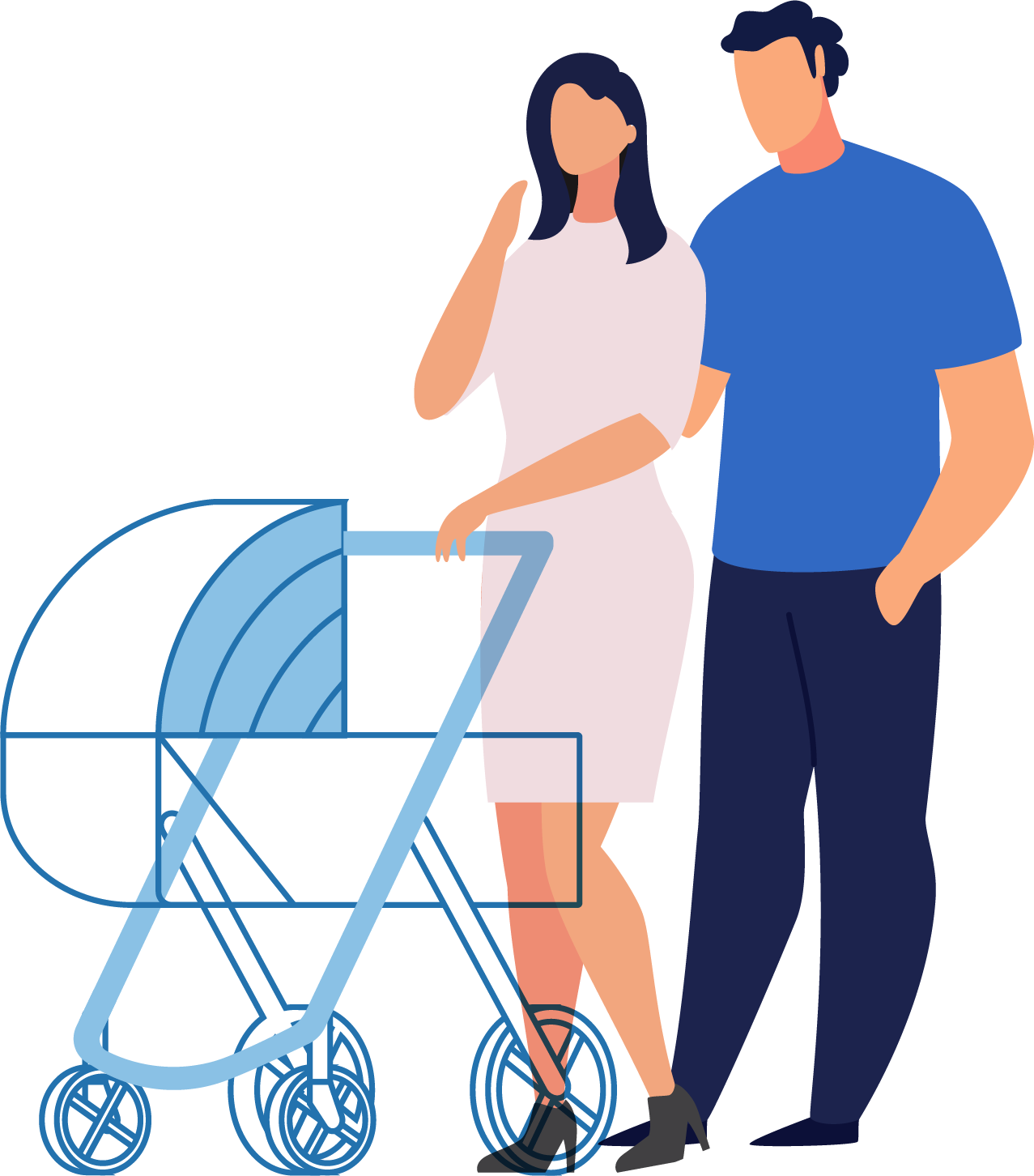What is Engorgement?
Engorgement refers to a swelling of the breasts. It is a common occurrence in women who have recently given birth. Early in the postpartum period, a mother’s hormone levels shift into overdrive, increasing blood flow to the breast tissue. As her colostrum transitions to mature milk, the milk ducts can become congested in one or both breasts.
Engorgement can happen within 2 - 3 days or as late as 9 - 10 days after giving birth, and the symptoms may be felt for 24 to 48 hours. First-time moms or moms who deliver via C-section may experience this condition later than those who have given birth before or who deliver vaginally. Symptoms can range from mild to intense; but they can be managed in simple, effective ways.
Signs of Engorgement
- Breast and nipple firmness
- Breast swelling and discomfort
- Breast pain
Not Engorged Normal lactating breast should be softer and the mother should be comfortable.
Engorged Engorged breast is full, hard & sore. The pressure can cause damage to the cells.

Tips for Managing Engorgement
Lessen the Chances of Engorgement
For the first two weeks after giving birth, breastfeed on demand at least every two to three hours around the clock. If for any reason the baby is not nursing well, be sure to pump and/or hand express your milk at the same frequency.
Before nursing or pumping: A warm shower or placement of a warm washcloth or warm heating pad on the breasts for 10 – 15 minutes can promote milk flow. Massaging the breasts and/or using the Breast Gymnastics technique described below also helps with letdown and milk flow.
If baby is having trouble latching on because of the engorgement:

Fingertips Method
With palms facing your chest, place two or three fingertips on either side of the nipple. Press gently on the area and massage in an outward direction until the areola compresses slightly.


First Knuckle Method
With palms facing your chest and fingers pointed straight down on either side of the nipple, massage gently outward from the areola. Switch your hands to the top and bottom of the nipple (they will now point in opposite directions) and massage gently toward the top and bottom of breast.


Two-Thumb Method
With thumbs pointing straight down and the base of your fingernail on either side of the nipple, massage gently outward until you feel a slight softening, or compression. Switch your thumbs to the top and bottom of the areola (thumbs will point in opposite directions) and repeat the gentle pressure, this time toward the top and bottom of breast.
Ease the Symptoms of Engorgement
Lymphatic Massage/Drainage uses gentle massage that is performed lying on your back. Begin with the most engorged breast, then move to the other. With one hand, gently draw small circles, moving from the nipple and areola area towards the collarbone, underarm, and/or cleavage. Continue to massage until you’ve covered the entire breast area. You can also massage above the clavicle and in the underarm area, as noted in these pictures. Click here for a video showing Maya Bolman, IBCLC, demonstrating this technique.

Lymphatic Drainage
Reduces swelling by assisting movement of lymph fluid, decreasing edema.
Breast Gymnastics, as taught by Maya Bolman, IBCLC: Place both hands under one breast, and gently move your breast up, down, left, right, in a circle in one direction, then in the other. Repeat with the other breast. Click here for a video showing Maya demonstrating this technique.
After nursing or pumping: Place cool compresses, ice packs, bags of frozen vegetables, or frozen wet towels on your breasts to reduce swelling. Wrap these aids in a towel or pillowcase to prevent damaging your skin and leave in place for 15 - 20 minutes while lying flat. This position elevates the breasts, which also helps with swelling.
Pain Relief: Talk with your care provider about taking over-the-counter medications like Ibuprofen or Acetaminophen to help with discomfort.
When to Contact Your Provider
If it is not addressed, engorgement can lead to complications like plugged ducts or mastitis, so contact your lactation consultant or doctor if you experience persistent symptoms including:
- Hardening, swelling, tenderness, pain and/or redness in one distinct area of your breasts
- Fever
- Chills
- A faster heart rate than normal
Mary Foye, MSN, FNP, NP-C
Resources:
- Mitchell, K.B., Johnson, H.M., Rodriguez, J.M., Eglash, A., Scherzinger, C., Zakarija-Grkovic, I,. Cash, K.W., Berens, P., Miller, B., & Academy of Breastfeeding Medicine. (2022). Academy of Breastfeeding Medicine Clinical Protocol #36: The Mastitis Spectrum, Revised 2022. Breastfeeding Medicine, 17 (5), 360-376. DOI: 10.1089/bfm.2022.29207.kbm
- Institute for the Advancement of Breastfeeding & Lactation Education. (2022). Help, my breasts are swollen & engorged! What can I do to feel better? iable_bf-ed_breastfeeding_lactation_swollen_breasts_engorgement.pdf (thepixelfarm.com)
- Schuiling, K.D., & Likis, F.E. (2017). Women’s Gynecologic Health Third Edition. Jones & Bartlett Learning, LLC.
- Bolman, M. (2022, January). Extraccion manual de leche [Video]. Maya Bolman, IBCLC. Extraccioń Manual De Leche - Maya Bolman IBCLC
- Bolman, M. (2022, January). Breast gymnastics [Video]. Maya Bolman, IBCLC. Breast Gymnastics [Video] - Maya Bolman IBCLC
